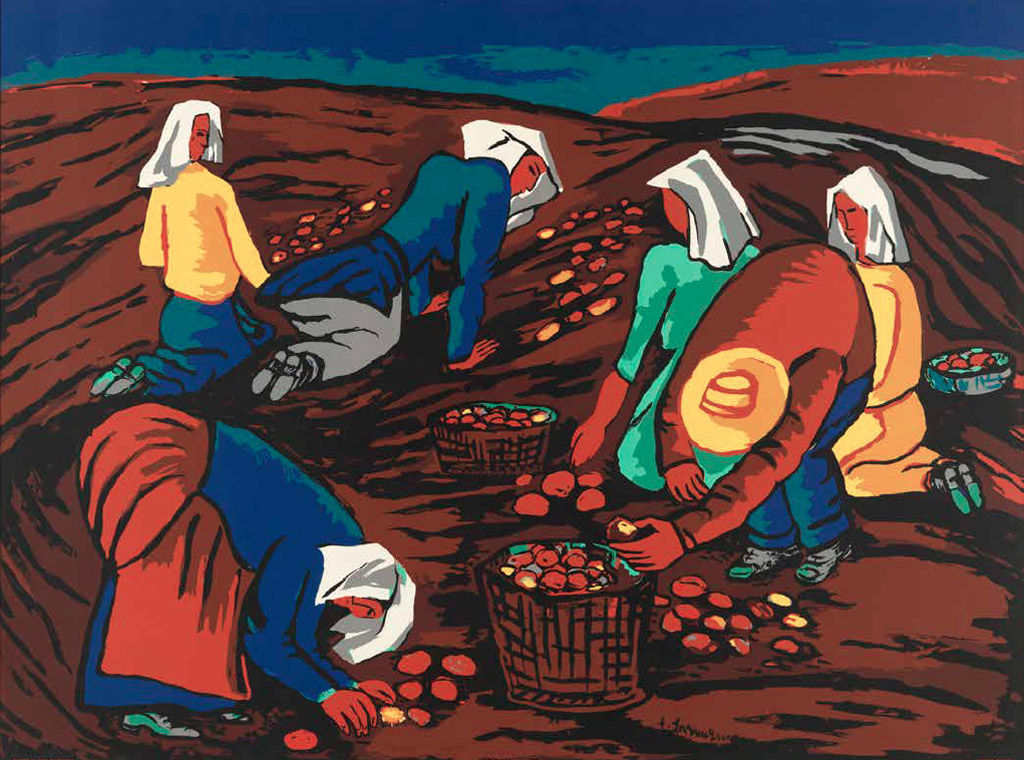Born in Germany, Canadian artist Friedrich Wilhelm Brandtner (Fritz) was a painter, draughtsman, muralist and teacher. He brought to Winnipeg, and later to Montreal, his understanding of European developments in art, and especially German Expressionism. His profound social concerns were visible not only in many of his artworks, but also in the very successful art programs he created for underprivileged children.
Largely self-taught in art, Brandtner assisted the post-impressionist August Pfuhle in his studio and taught life classes at the University of Danzig. At the same time, he worked as a graphic designer, and participated in at least one group exhibition in Danzig. In 1928, he moved to Canada, settling in Winnipeg, where he mounted a solo exhibition within months of arriving. He found work as a commercial artist, muralist and set designer, and met Bertram Brooker, LeMoine FitzGerald, Caven Atkins and Philip Surrey. FitzGerald advised him to move to Montreal for its more experimental art scene, and put him in contact with Robert Ayre, the Montreal art critic and Winnipeg native.
Brandtner heeded his friend’s advice in 1934, and was soon introduced by Ayre to the Montreal art community, including Louis Muhlstock, André Biéler, Jori Smith, John Lyman and Anne Savage. Dr. Norman Bethune and Marian Scott also counted among Brandtner’s first contacts in Montreal; the three shared a concern for social issues. In 1936, Bethune arranged an exhibition of Brandtner’s work at Henry Morgan and Co. to benefit the Canadian League Against War and Fascism. The same year, Brandtner and Bethune founded the Children’s Art Centre, with Scott soon joining the teaching staff.
Over the next 20 years, Brandtner taught art in numerous community organizations and schools, and directed the University of New Brunswick’s summer art school for several years. Along with Pegi Nicol Macleod and Louis Muhlstock, he contributed illustrations to periodicals such as The Canadian Forum and New Frontier. He made numerous sketching and painting trips to the Gaspé, Laurentians and Nova Scotia.
As his print ‘Potato Pickers’ portrays, the workers are toiling in harvest. The arched stretching of their backs suggest the labour of the task completed, while limbering up with much more to do. The rolling background suggests a mountain of work ahead, with cool winter tones and frost or snow creeping onto the scene. Even the reddish colors used in the subjects creates a mood of tanned skin, as if this is the last part of yearly field work is finally within grasp. The robotic features of the faces – even some figures devoid of features altogether, give us the sense that this is a print about the process, and the mood of satisfying hard work communally rather than the individual.
A prolific artist, Brandtner worked in oils, watercolours, graphite, charcoal, mixed media, carved linoleum and encaustic. In both figurative and abstract work, his subjects were varied and included landscapes, cityscapes, portraits and anti-war images, and more. He experimented early on in abstraction, and his painting trips inspired numerous abstract landscapes. Brandtner was the subject of some 15 solo exhibitions across Canada, and participated in numerous international group exhibitions. He was a member of the Contemporary Arts Society and received a number of awards, including the 1946 Jessie Dow Award, given by the Art Association of Montreal.
